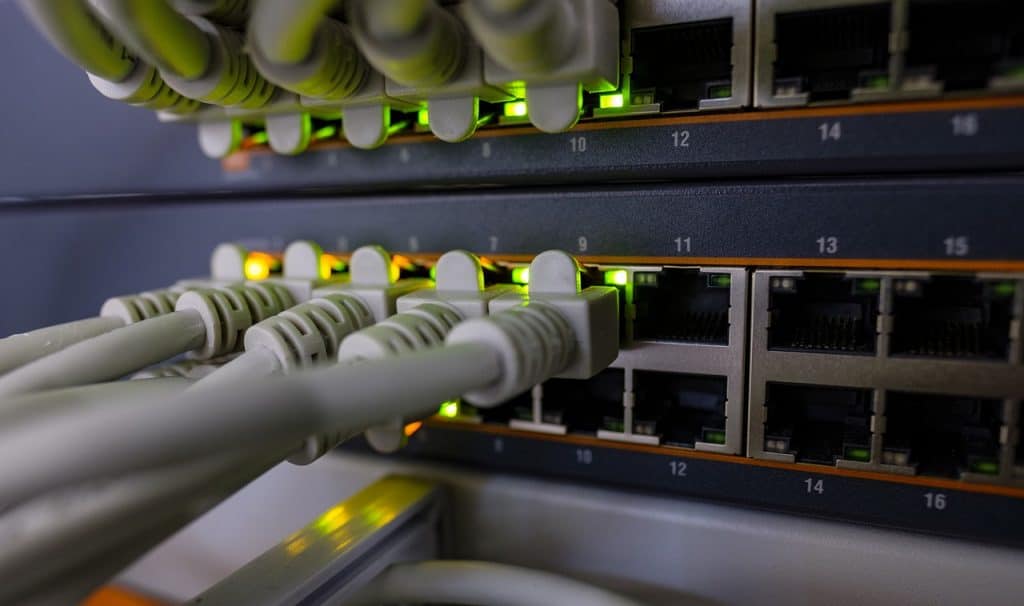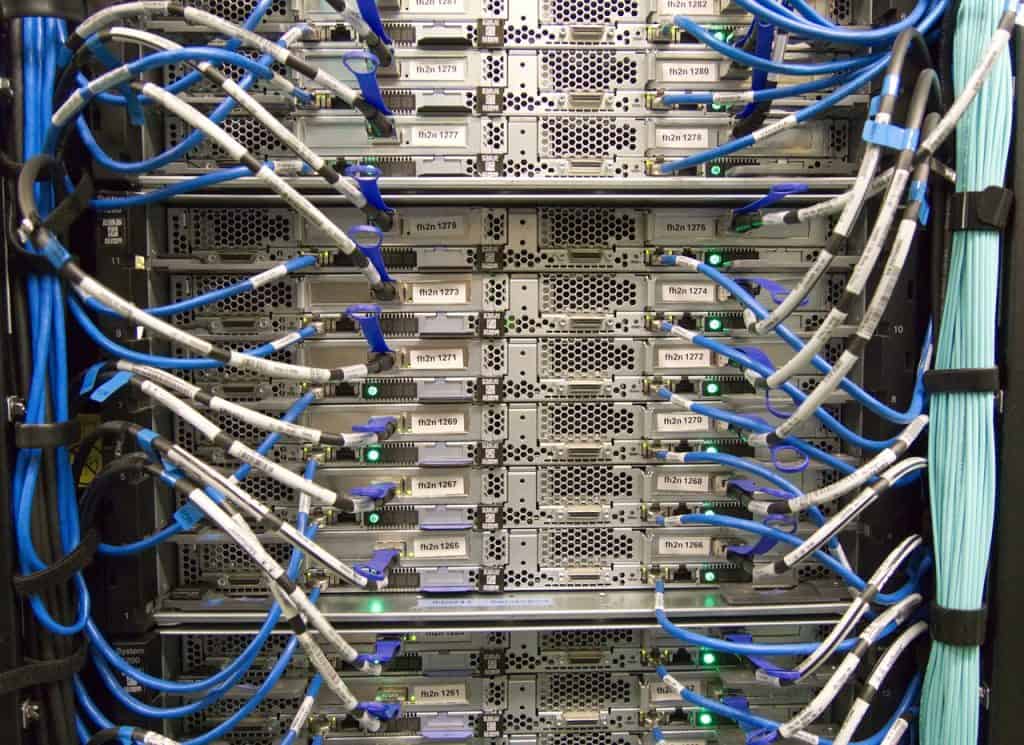Routing
Routes in routing tables are created in one of two ways: manually inserted or dynamically discovered by the router. Static routes are used by routers. Most routers, on the other hand, can alter their routes dynamically if they’re given the additional intelligence in the form of dynamic routing protocols.
Routing protocols have been around for a long time, and like any technology, there have been a variety of options and variations throughout the years.
These many forms of routing protocols are divided into three categories by CompTIA Network+ competencies: distance vector, link state, and hybrid.
When routers have more than one path to go to another network, they employ a factor called a metric, which is a relative number that routers use. A more serious router, unlike the gateway routers we use in our homes, may typically have many connections to a specific network.
Routers may change their routing tables using dynamic routing protocols by connecting with other routers. When a router loses a connection, it looks for other ways to connect to the same network. The metric option is used by the router to determine which route to take. The measure with the lowest score always wins.
Vector of Distance
RIPv1, RIPv2, or Cisco’s Enhanced Interior Gateway Routing Protocol are the three distance vector routing protocols that routers may employ (EIGRP).
Distance vector routing systems identify the optimum route to other routers based on cost (distance) and direction using one of many techniques (vector).
The most basic total cost calculates the number of hops (hop count) between a router and a network. Each time a packet passes through a router, it is referred to as a hop. So, if a router is one hop away from a network, the cost of that route is one; if it is two hops away, the cost is two.
Not every network connection is created equal. A router may have two one-hop routes to a network, one that uses a fast connection and the other that uses a slow connection. Both routes would be regarded equal if hop count was the sole statistic employed.
RIPv1 (Routing Information Technology version 1), a distance vector routing protocol established in 1988, solely takes hop count into account while calculating metrics (with a maximum of 15). Every 30 seconds, they broadcast their whole routing table to other routers in the internetwork as broadcast traffic. Because the routing table changes are broadcasts, all devices in each network will read (and discard) the complete packets, wasting bandwidth and processing power.
RIPv2
RIPv2, which was approved in 1993, is comparable to RIPv1, although it addresses several of RIPv1’s flaws. The protocol now has VLSM (variable-length subnet masking) support, as well as authentication. Furthermore, rather of broadcasting, multicasting is employed for router swaps (so clients drop the updates much earlier instead of reading through the entire packet). The maximum hop count of 15 is still in effect for RIPv2.
Many years ago, RIPng (RIP Next Generation) was designed as an improved RIPv2 for IPv6 networks. RIPng had several fascinating features, but it was never given much of a chance by more current and popular protocols. On an IPv6 network, you’re unlikely to notice it.
EIGRP
EIGRP, unlike RIP, only delivers updates on changes as they occur, rather than the whole routing table at predefined intervals. EIGRP is still classified as a distance vector routing protocol since, like RIP, it depends on neighbour updates (routing by rumour) and does not calculate the topology on its own. Furthermore, just the best path to a network, not all feasible routes, is presented.
EIGRP calculates its statistic by default using the minimum bandwidth on the way to a destination network as well as the overall delay across all connections. The kind of interface affects both bandwidth and latency (Gigabit Ethernet, 10 Gigabit Ethernet, etc.).
For IPv4 networks, EIGRPv4 is EIGRP, whereas EIGRPv6 is EIGRP for IPv6 networks.
State of the Link
Because of the limits of RIP, there was a desire for a quicker protocol that used less bandwidth on a self-contained system (internetwork). The primary concept was to create a dynamic routing protocol that would be more efficient than routers that just broadcast their complete routing table at regular intervals. Instead, why not just notify and convey specific route modifications as they occur? A link state dynamic routing protocol is based on this concept.
Routers must receive entire routing tables from neighbouring routers at preset intervals in order to understand the topology of the internetwork using distance vector routing protocols. After hearing about the status of the connections from the actual routers attached to each link itself (thus the name link state), link state routing protocols enable routers to create their own topology map of the internetwork and make their own judgments on how to get to destination networks. OSPF is the dynamic link state routing protocol used by most autonomous systems (Open Shortest Path First).
OSPF
OSPF is substantially more efficient than RIP and converges much quicker. In comparison to RIP, OSPF has a lot of advantages.
When OSPF-capable routers are initially launched, they send out Hello packets in search of other OSPF routers. After establishing a neighborship (neighbour relationship) through Hello packets, two neighbouring routers share information about routers and networks using link status advertisement (LSA) packets. Each router generates LSAs, which are then flooded from router to router across each OSPF region.
Once all of the routers have communicated, they each choose their own best routes, and convergence occurs very instantly. OSPF routers swiftly recompute a new route using saved LSAs if a route goes down.
OSPF quickly corrects link failures and achieves convergence. This helps avoid routing loops, which occur when two routers transmit packets back and forth, each believing the other router is the correct destination for the packet. OSPFv3 improves on its predecessor (OSPFv2) in several ways, including IPv6 support.
The cost measure used by OSPF is a function of bandwidth. All feasible routes to a target network are calculated using this cost value, which is proportional to bandwidth, which is proportional to interface type (Gigabit Ethernet, 10 Gigabit Ethernet, etc.). The network with the lowest overall cost is selected.
When OSPF is used instead of RIP, a packet may go via additional routers (hops) to reach its destination. More hops, on the other hand, does not always imply slower. A packet would arrive to its destination faster if it went over three hops, when the routers were linked by fibre, rather than a sluggish 56 Kbps connection. We, too, make these judgments on a daily basis as people. To get someplace faster, one would prefer drive more miles on the highway than fewer miles on local streets, where the speed limit is significantly lower and red lights and stop signs add to the driving latency!
Hybrid
BGP is included as a hybrid routing protocol in the CompTIA Network+ test objectives because it may be utilised both inside your backbone routers and between your backbone routers and other AS routers.
BGP
The fast expansion of the Internet in the 1980s necessitated a major renovation of the Internet’s structure, with one of the most important parts of that reorganisation being the request for “large” routers to employ a standardised dynamic routing protocol. Implementing this was more tougher than you may imagine since the entities who regulate how the Internet functions do it in a very decentralised method. Even established organisations like the Internet Society (ISOC), the Internet Assigned Numbers Authority (IANA), and the Internet Engineering Task Force (IETF) are made up of a diverse assortment of people, businesses, and government agencies from all over the world.
The rearrangement finally resulted in a multitiered structure. Many Autonomous Systems are located at the top of the building. An autonomous system (AS) is a collection of networks owned by a single entity (such as an ISP) and regulated by a single dynamic routing policy and, in many cases, a single protocol.
A specific globally unique Autonomous System Number (ASN) given by IANA is used by an Autonomous System in addition to IP addresses. ASNs were originally 16 bits, but they are now 32 bits. Rochester Institute of Technology’s ASN, for example, is AS4385 (16-bit format), but a 32-bit ASN is frequently characterised as AS10.20.23.44.
You configure a router to utilise the ASN provided by the IANA in the same way that you would assign an IP address to it.
Exterior Gateway Protocol is a protocol used by autonomous systems to interact with one another (EGP). Interior Gateway Protocols are the protocols used by the networks within an AS to communicate with each other (IGPs).
Neither EGP nor IGP is a dynamic routing protocol; rather, they are categories that reflect routing protocols transmitted between routers of the same AS (IGP—further separated into distance vector vs. link state) or between different autonomous systems (EGP) (EGP).
The easiest way to distinguish these terminologies is to recognise that, although several protocols are used inside Autonomous Systems, such as OSPF, the Internet has chosen one protocol for communication between each AS: Border Gateway Protocol (BGP-4). BGP is the Internet’s glue, binding all Autonomous Systems together.
BGP routers, also known as AS-to-AS routers, broadcast information transmitted to them from separate Autonomous Systems’ edge routers. These ads, which contain the ASN and other information, are forwarded by BGP.
BGP also understands how to deal with a variety of Internet-specific issues. Most BGP routers will disregard a router that presents a new route that isn’t stable. BGP also includes regulations that restrict which and how other routers may connect to an ISP.
BGP provides and supports route aggregation, a method of breaking down routing tables into smaller, more manageable chunks. The backbone routers monitor the position of routers that link to subsets of places rather than attempting to keep track of every other router on the Internet.
iBGP and eBGP are two different types of BGP.
Within an AS, BGP may be used to transmit information from one BGP router to another BGP router. The goal of iBGP is to achieve this (internal BGP). It’s not designed to be utilised in the same way as OSPF or EIGRP are. Its only function is for one of your backbone BGP routers to inform the rest of your backbone BGP routers of what it knows. The rationale for this is that your AS’s IGP, such as OSPF, may now choose the appropriate backbone BGP router to direct traffic to depending on the destination network.
Types of Routing
Dynamic, static, and default routing are the three forms of routing. Dynamic routing includes the aforementioned categories (distance vector, link state, and hybrid), but static and default are also significant.
Dynamic Routing
Dynamic routing, as previously mentioned in this area, is when you instruct routers to connect with one another and learn about networks using a routing protocol such as RIP, EIGRP, OSPF, or BGP.
Static routing
Static routes still have a role in today’s routing tables, despite the many advantages of dynamic routes.
When a network engineer manually inputs next-hop IP addresses of nearby routers to get to target networks, this is known as static routing.
Your home network, for example, transmits all traffic to your ISP’s router. Your ISP’s router and your home router don’t need to communicate routing table changes over BGP. Your traffic will not travel to the Internet if the connection goes down. As a result, your router doesn’t need to execute BGP with your ISP’s router. Furthermore, your home network lacks the power and storage capacities required by a BGP router.
Static routes are chosen for stub networks in Autonomous Systems (networks accessible by just one path). When there’s just one route to get to a target network, why waste bandwidth and computation using dynamic routing protocols? Every network with a linear topology, for example, has just one path in and out.
Default Routes
For any target network not in a router’s routing database, routers utilise default routes to redirect packets to other routers. For example, if a router is unable to discover a particular route for a destination IP address because the destination network is not mentioned in the router’s routing table, the packet will be dropped and an ICMP error message will be sent back to the source.
A default route enables this router to pass the buck to another router, which accomplishes the same thing by searching the routing table for a match, whether it’s a matched route or a default route.
For Internet-based traffic originating inside the autonomous system, default routes on border routers within firms normally link to the ISP’s router.




